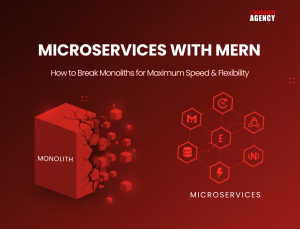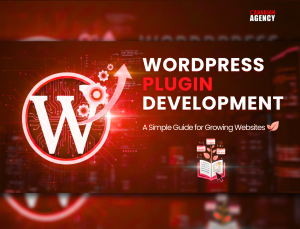In today’s hyper-connected world, digital experiences are not as light as they seem. From loading a single web page to streaming videos and running background scripts—everything consumes energy. The internet is responsible for nearly 3.7% of global carbon emissions, rivaling the aviation industry. As user expectations for high-speed, feature-rich websites grow, so does the environmental cost of maintaining those digital experiences. For software development agencies, the challenge is clear: how do we build powerful, engaging websites without leaving a heavy carbon footprint? The answer lies in sustainable web design—and WordPress is the perfect platform to make that shift. As the world’s most widely used content management system, WordPress offers the flexibility, scalability, and tools necessary to design greener websites that still meet performance, usability, and design standards.
Sustainable WordPress development means optimizing themes, reducing media bloat, limiting plugins, and using green hosting—all while improving user experience. It’s not just about being eco-conscious; it’s also about creating faster, leaner, and more cost-effective websites for clients who care about their digital and environmental footprint. Ready to future-proof your web development approach? This blog breaks down how to make your WordPress websites better for users—and better for the planet.
Why Sustainability Matters in Web Development
The internet accounts for approximately 3.7% of global carbon emissions—comparable to the airline industry. A typical website emits an average of 1.76 grams of CO2 per page view. Multiply that by thousands of daily visitors, and you have a significant environmental impact.
Sustainable web design isn’t just about going green; it’s about:
- Reducing energy consumption
- Optimizing performance
- Improving user experience
- Lowering server and bandwidth costs
It also aligns with a growing demand from eco-conscious consumers and businesses looking to reduce their environmental impact.
The Role of WordPress in Green Web Design
WordPress powers over 40% of the web, making it a logical platform to implement and advocate sustainable practices. Its flexibility, open-source nature, and extensive plugin ecosystem allow developers to make intentional, eco-friendly decisions.
Here are core strategies to implement sustainable WordPress development:
Choose Green Hosting Providers:
The journey to a sustainable website begins at the server level. By choosing a hosting provider with clear sustainability policies, energy-efficient infrastructure, and certifications for green practices, you’re not just reducing your website’s carbon footprint. You’re also ensuring faster load times, better uptime, and a more responsible use of resources. It’s a proactive step that benefits both your business and the planet.
When choosing a hosting provider, look for clear sustainability policies, energy-efficient infrastructure, and certifications for green practices. A responsible host not only reduces your website’s carbon footprint but also ensures faster load times and better uptime—making sustainability good for both the planet and performance.
Optimize Media and Visual Assets:
Media files—primarily images and videos—are often the heaviest elements on a web page, significantly impacting load times and energy usage. Every additional megabyte increases the electricity required to transmit, render, and display your site across devices and networks. Optimizing visual content is not just good practice for performance—it’s crucial for sustainability. Start by using next-gen image formats like WebP or AVIF, which offer superior compression without compromising quality. These formats can significantly reduce the size of your visual assets, thereby decreasing the energy required to transmit, render, and display your site across devices and networks. Compress all visuals before uploading, and enable lazy loading so that off-screen assets don’t load unnecessarily. Avoid using large, high-resolution banners or autoplay videos that consume extra bandwidth and energy.
Use Lightweight Themes and Minimalist Design:
A website’s theme forms its structural and visual foundation, and the choice of theme plays a crucial role in both performance and sustainability. Heavy, feature-rich themes often include unused scripts and design elements, causing slower load times, increased data transfer, and unnecessary strain on servers.
Lightweight themes, by contrast, focus on delivering clean code, streamlined CSS and JavaScript, and minimal third-party dependencies. These themes are designed for speed and efficiency, making them ideal for sustainable web development. Look for themes that are accessibility-ready, responsive across devices, and regularly updated by developers committed to optimization. Minimalist design not only reduces environmental impact but also enhances usability. By removing clutter and focusing on essential elements, you create a more focused and engaging experience for users—while consuming fewer resources in the process.
Limit Plugin Usage and Code Bloat:
While plugins enhance WordPress functionality, overusing them can slow down your site and increase its environmental impact. Each installed plugin can introduce extra scripts, styles, and server requests—contributing to more energy consumption. Adopt a minimalist approach by installing only essential plugins. Select those that are actively maintained, well-coded, and multipurpose to avoid redundancy. Test the performance impact of each plugin and remove any that are unnecessary or outdated. Additionally, perform regular database cleanups to eliminate unused data and legacy code.
Fewer plugins mean reduced energy usage, faster page loads, and a more secure site—benefiting both your users and the planet.
Implement Caching and Content Delivery Networks (CDNs):
Caching and Content Delivery Networks (CDNs) are vital tools for creating sustainable WordPress sites. By serving cached versions of your pages, you reduce the need for repetitive server processing—saving energy with each page load. CDNs complement this by storing your content in data centers around the world, ensuring users are served from the closest location. This reduces latency, bandwidth usage, and overall carbon output associated with data transmission. When appropriately implemented, caching and CDNs significantly enhance both performance and eco-efficiency—making them essential in green web design.
Reduce JavaScript and CSS Dependencies:
Bloated JavaScript and CSS files not only slow down your website but also require more power to process, both on the server and user devices. Streamlining these resources is key to building lightweight, energy-efficient sites. Focus on minimizing and combining your CSS and JavaScript files. Use only the scripts you genuinely need, and defer non-critical ones to load after the main content. Tools like PurgeCSS or Asset CleanUp can help identify and eliminate unused styles. A smaller footprint reduces rendering time and bandwidth usage—making your site faster and greener without sacrificing functionality.
Monitor Website Performance and Emissions:
Sustainable websites require ongoing care to remain efficient over time. As updates, content additions, and plugin changes occur, your site’s environmental performance can shift. Regular monitoring ensures you catch inefficiencies early and make informed improvements. Leverage tools like Google PageSpeed Insights and GTmetrix to assess loading speed and resource consumption. Additionally, use the Website Carbon Calculator to estimate the carbon footprint of your pages and track progress over time.
By incorporating these evaluations into your maintenance routine, you can stay aligned with your sustainability goals while maintaining top-tier performance. Transparent reporting also helps you demonstrate environmental responsibility to clients, users, and stakeholders—reinforcing your agency’s commitment to digital sustainability.
Design for Digital Efficiency:
Efficient design is about more than aesthetics—it’s about creating an intuitive and purposeful user journey that minimizes waste. Every unnecessary page load, redirect, or click increases energy consumption. By designing with digital efficiency in mind, you can build WordPress websites that are both eco-conscious and highly functional.
Start with a clear site structure and streamlined navigation to help users find what they need quickly. Reduce cognitive load by limiting distractions, using clear call-to-actions, and prioritizing the most relevant content. A mobile-first design ensures that your site performs well on smaller screens with lower power consumption, while also improving accessibility and performance. Ultimately, efficient design reduces resource usage and supports a smoother user experience—proving that sustainability and usability can go hand in hand.
Conclusion: Building a Greener Digital Future with WordPress
In an age of growing environmental awareness, sustainable web development has become a vital component of responsible digital innovation. WordPress, as a widely adopted and flexible platform, gives developers and agencies the tools to lead this shift. From selecting green hosting providers to designing minimalist interfaces and streamlining code, every step we take toward optimization makes a measurable difference.
Creating energy-efficient websites isn’t just good for the planet—it also leads to faster performance, lower operating costs, and better user experiences. For clients, this means a digital presence that’s not only powerful and scalable but also aligned with modern values of sustainability and efficiency.
As a software development agency, your commitment to sustainable practices reflects your forward-thinking mindset and enhances your brand’s credibility in a competitive landscape. By embracing eco-friendly strategies in WordPress development, you’re helping build a cleaner, faster web—one that benefits your clients, your users, and the environment.




